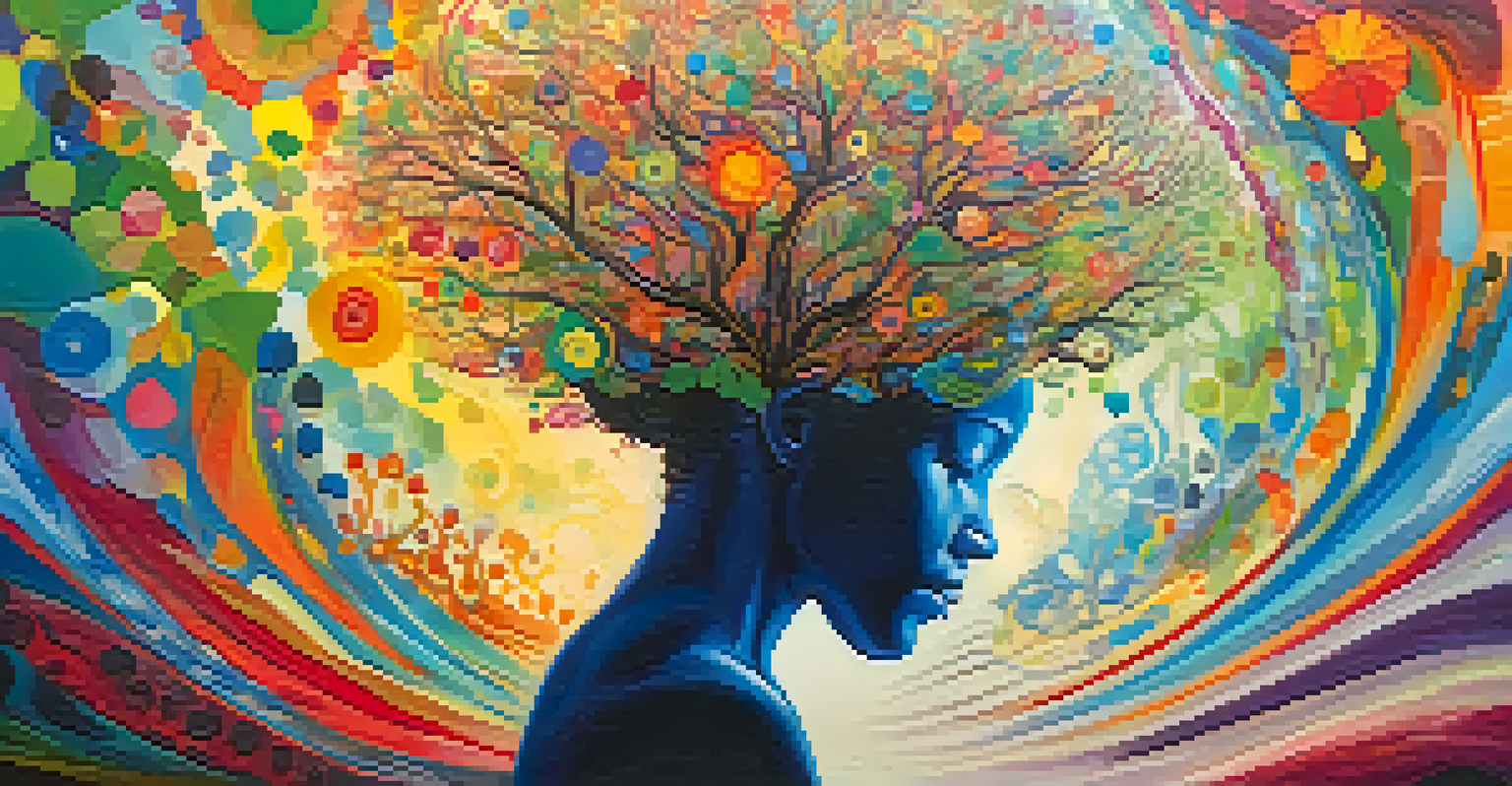Entheogenic Experiences: Shaping Perspectives in Education

Understanding Entheogens and Their Role in Education
Entheogens are substances that are often used in spiritual and religious contexts to induce altered states of consciousness. They have been gaining attention not just in psychology but also within educational frameworks. By exploring these substances, we might unlock new ways of thinking and learning, enhancing our understanding of self and the world.
The mind is everything. What you think you become.
In educational settings, entheogenic experiences can lead to profound insights and foster creativity. Students may discover innovative solutions to problems, drawing connections they never noticed before. This can be particularly valuable in fields requiring critical thinking and creativity.
However, the use of entheogens in education is not without controversy. It raises questions about safety, legality, and ethical considerations. Nevertheless, many advocate for a careful, research-based approach to exploring their potential benefits in learning environments.
Historical Context of Entheogenic Use in Learning
Throughout history, various cultures have utilized entheogens as tools for education and personal growth. Indigenous peoples often integrated these substances into rituals that were essential for teaching younger generations about spirituality and community values. This historical perspective provides a foundation for understanding the potential applications in modern education.

In ancient Greece, for instance, the Eleusinian Mysteries involved the use of a secret potion believed to induce transformative experiences. These gatherings served as a form of higher learning, where participants gained insights about life, death, and their personal journeys. Such historical precedents suggest that there is a long-standing relationship between altered states and learning.
Entheogens Enhance Learning Potential
Entheogens can foster creativity and critical thinking in educational settings, leading to profound insights and innovative problem-solving.
Revisiting these practices can inspire contemporary educational models to incorporate experiential learning that transcends traditional methods. By understanding how past societies utilized entheogens, modern educators may find innovative ways to engage students and promote deeper learning.
The Science Behind Entheogenic Experiences
Scientific research into entheogens has shown that these substances can significantly alter brain function and perception. Studies indicate that they may enhance neuroplasticity, allowing the brain to form new connections and pathways. This ability to rewire our thinking can be particularly beneficial in educational contexts.
Education is not the filling of a pail, but the lighting of a fire.
For example, psilocybin, a compound found in certain mushrooms, has been linked to increased openness and creativity. These traits are essential for effective learning and problem-solving. As educators seek to foster these qualities, entheogens may serve as a valuable tool in their toolkit.
However, it's crucial to approach this area with caution. While the science is promising, further research is needed to fully understand the long-term effects and implications of using entheogens in educational settings. Balancing the enthusiasm for their potential with a commitment to safety and ethics is essential.
Potential Benefits of Entheogens in Education
One of the most significant benefits of entheogenic experiences is their potential to enhance empathy and emotional intelligence. These qualities can transform the educational landscape by encouraging students to connect with one another on deeper levels. An emotionally aware classroom fosters collaboration and understanding, which are crucial for effective learning.
Additionally, entheogens may aid in stress reduction and mental health improvement. In our fast-paced world, students often experience anxiety and pressure, which can hinder their ability to learn. By promoting a sense of calm and introspection, these experiences can help students navigate their challenges more effectively.
Historical Use in Education
Various cultures have historically utilized entheogens for educational purposes, suggesting a long-standing relationship between altered states and learning.
Ultimately, the integration of entheogens into education could lead to not just academic success but also personal growth and well-being. Envisioning classrooms as spaces for holistic development can revolutionize how we approach learning.
Challenges and Risks of Entheogenic Integration
While the potential benefits are intriguing, integrating entheogens into education comes with significant challenges. First and foremost is the issue of legality; many substances remain illegal in various jurisdictions, creating barriers for exploration. Educators must navigate these legal frameworks carefully to avoid repercussions.
Moreover, there are health risks associated with entheogenic use. Not all students may react positively to these substances, and adverse experiences can occur. Educators need to be prepared to support students who may face psychological challenges as a result of their experiences.
Finally, there is the risk of misuse. Without proper guidance and structure, entheogens could be approached casually, undermining their potential benefits. A thoughtful, well-researched approach is essential to mitigate these risks and ensure that entheogens are used safely and responsibly in educational contexts.
Case Studies: Successful Integration of Entheogens
Several organizations and institutions have begun exploring entheogenic experiences within educational frameworks. For instance, some wellness programs have incorporated guided psychedelic therapy as a means of fostering personal growth among participants. These programs have reported significant improvements in participants’ emotional well-being and cognitive flexibility.
Another example is the use of psychedelics in creative workshops, where artists and thinkers come together to explore innovative ideas. Participants often describe increased creativity and collaboration, leading to groundbreaking projects. These case studies illustrate the transformative potential of entheogens when used in a structured and supportive manner.
Challenges in Integration
The integration of entheogens in education faces significant challenges, including legal issues, health risks, and the potential for misuse.
These successful integrations provide valuable insights into how entheogens can enhance educational experiences. They also highlight the importance of ongoing research and adaptation as we seek to understand the optimal ways to incorporate these substances into learning environments.
Envisioning the Future of Education with Entheogens
As we look to the future, the integration of entheogens into educational practices could lead to a profound shift in how we understand teaching and learning. Imagine classrooms where students explore their consciousness and engage with one another in deeply meaningful ways. This could redefine the educational experience, making it more holistic and interconnected.
Moreover, as societal attitudes toward entheogens continue to evolve, we may see more acceptance of their use in various fields, including education. This shift could pave the way for innovative curricula that embrace experiential learning and self-discovery as central components of the educational journey.

Ultimately, the future of education may lie in our willingness to explore new frontiers. By considering the potential of entheogenic experiences, we can foster environments that nurture creativity, empathy, and personal growth among students, preparing them for a rapidly changing world.